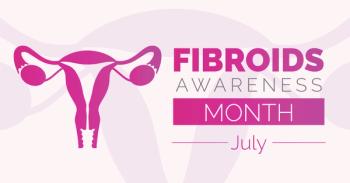
Role of GnRH Antagonists for Uterine Fibroid Management
Experts in gynecology provide an overview of GnRH antagonists and examine the therapeutic use of these agents in treating patients with uterine fibroids.
Episodes in this series

Mauricio Abrão, MD: It’s time for us to jump to GnRH [gonadotropin-releasing hormone] agonists and antagonists. This is something that we should discuss a little deeper because it’s a very contemporary issue with the antagonists that are coming. I’d like to start with the history of GnRH agonists, because after the substitution of 2 amino acids of the GnRH analogues, creating the GnRH analogues in the 1980s, a Nobel Prize was given to the developer of this medication. They created a new concept of the inhibition of the estrogens and it became a treatment for the estrogen-dependent disease.
The only issue that was considered from the beginning is that most of the GnRH agonists had a flare-up in the first 10 to 15 days that may have a negative impact for estrogen-dependent diseases. Also, the monthly use of the medication, or even the use of every 3 months, was a limitation that led the researchers to think about the concept of the antagonist. What can you tell us about the current availability of the GnRH antagonists, Jessica? Let me know your thoughts.
Jessica A. Shepherd, MD, MBA, FACOG: Mauricio, I’m glad to see this as a part of progression when we think of clinical medicine, because like you stated, GnRH agonists, which obviously are different from GnRH antagonists, were a way for us to do deal with patients’ bleeding and fibroids. However, there were some adverse effects that weren’t necessarily as beneficial for the patient who experienced them. We’re moving into a day and age where GnRH antagonists are proving that we can see a rapid onset of estrogen suppression, but not to a point where it’s so hypoestrogenic that patients are having a significant impact in the adverse effect profile.
We’re also allowing patients to have something with an oral administration, which allows patients to feel that they have maybe a little more control or buy-in into the root of administration at which they’re going to impact their quality of life. The root of administration improves the experience for patients when we think of how they’re able to access and take their medication. From a GnRH antagonist standpoint, I have found in my practice that this is a way that patients can have some quick onset and significant ways of approaching how they’re able to address their fibroid symptoms from knowing newer technology.
Many of my patients who come in have either failed a form of medical management or are averse to it from stories that they’ve heard from friends, family, and relatives. Sometimes from a clinician standpoint, it’s hard for patients to understand that what someone else may have gone through may not necessarily be their experience. But now that we’re able to actually show them some new data and approaches to fibroid management when it comes to bleeding, that’s profound. We’re in a day and age where we’re starting to see that we have more to offer in this disease state of fibroids and heavy bleeding, when we may have only had 1 or 2 tools in our toolbox in the past.
This allows progression of conversation and the relationship with patients with their clinician, but also in making sure that we’re responsible from our end of discussing what that does from an estrogen standpoint, how that decreases, and the therapeutic efficacy that they’re going to achieve by taking these medications. It’s putting fertility back into the conversation early. Many patients want to know how this is going to affect their fertility. Mauricio, from the GnRH antagonist options that we currently have approved, how do you figure out who’s going to be an ideal candidate for a GnRH antagonist? What considerations do you consider when you’re starting someone on these newer agents?
Mauricio Abrão, MD: One of the things to be considered is when we talk about the flare-up. Because when we have a patient with heavy bleeding, if you do something like an antagonist, you’re going to have a flare-up and there will be an increase of the estrogen levels for these patients. This may be bad for the symptoms of the patient who’s looking for something to treat the problem. But when we give something that may be oral and the decrease of the levels of estrogen is very rapid, this configurate, one of the characteristics of the ideal indications for this [INAUDIBLE].
Another thing is that if the flare-up is important, when you stop the medication, such as when the patient wants to be pregnant, we can go back to the normal levels of hormones faster than in other situations. This can be an important indication for this. We’re talking about this treatment for the symptoms, but we need to consider this treatment as well when we think about big fibroids, reducing the volume of the fibroids to do a surgery or even to decide about another therapeutic option, followed by a clinical treatment before. Always follow it by a good imaging method for us to define this strategy for this proposal. These are good candidates. Looking for the volume of the uterus, the definition, the number of fibroids, the position of the fibroids, and the type of fibroids—submucosal, subserosal, or intramural—are important aspects to be discussed.
Transcript Edited for Clarity
Newsletter
Get the latest clinical updates, case studies, and expert commentary in obstetric and gynecologic care. Sign up now to stay informed.














